Manual machine gun MG.13 "Draize"
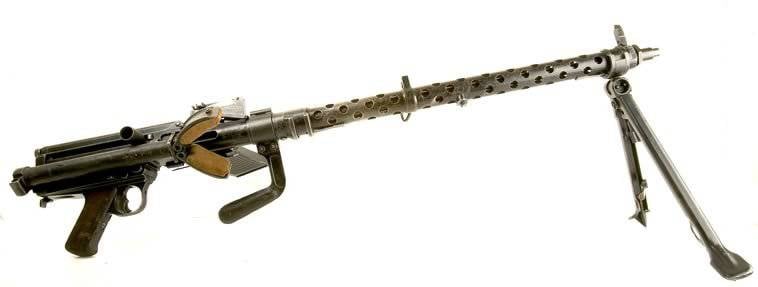
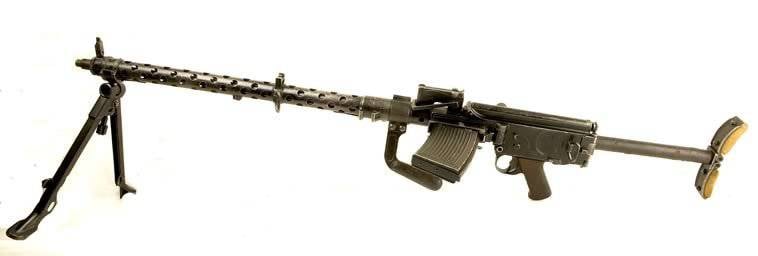
The light machine gun developed by Louis Stang in the Rheinische Metallwaren und Maschinenfabrik branch office in Sommerda (the former Dreyze factory) attracted much public attention. On the basis of the prototype of the “Dreyse” light machine gun of the 1918 model of the year and the Flieger MG13 aviation machine gun, Luis developed a “light infantry” machine gun with an 50 disc magazine with cartridges and a “light cavalry” carton with a 25 cartridge capacity. But the operation of the power supply system was unreliable, so at the end of the 20-ies created the following modification, which received the code designation "device 13" or NQ 13. The index "14" was assigned to the experimental machine gun version of the machine gun, "15" - aviation.
In 1931, the modification “13b”, which had a box-shaped magazine, was adopted under the designation MG.13 “Draise” (as before, “Rheinmetall” used this trademark) to use the Reichswehr as an automatic weapon for infantry companies. The manufacturer officially declared the company "Zimson und Zon" in Zul, since only Versailles restrictions allowed it to produce infantry automatic weapons. Five years later, the MG.13 machine gun pushed aside the single MG.34, but at the same time it was widely used in other countries. In particular, the MG.13 machine gun as well as the Draise 08/15 machine gun converted on its model in 1933-1934 were sold to Portugal (the M938 designation was in service until the end of the 40s), Spain, China (delivered with tanks German production). These machine guns were produced by the company Gustlov-Werke already requisitioned by the Nazi state.
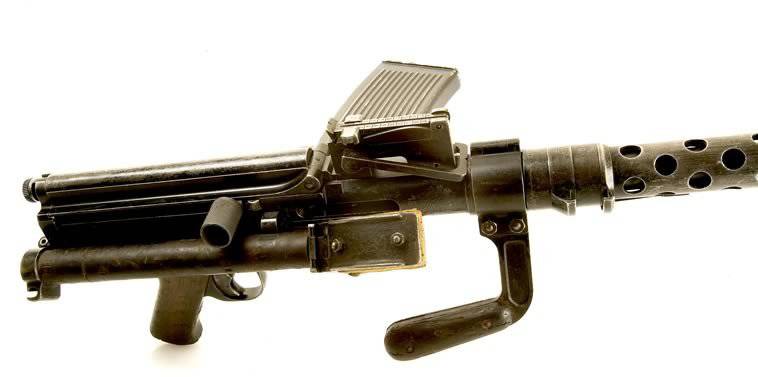
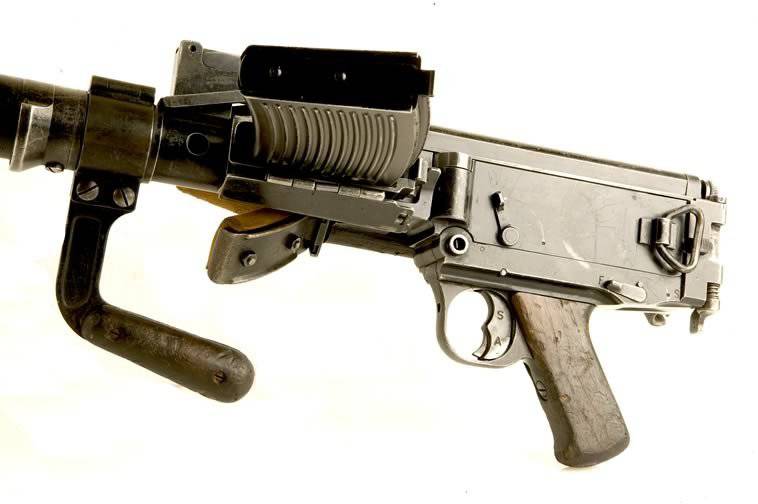
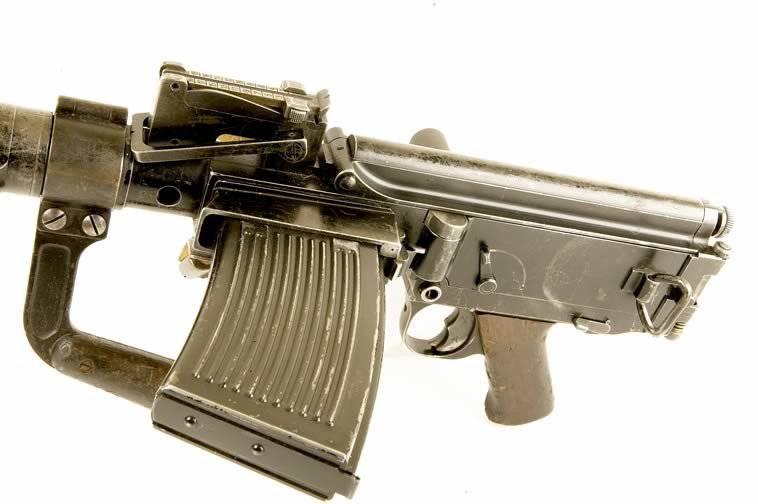
In the automatic machine gun was implemented scheme recoil of the barrel during the short course. The barrel bore was locked with a bolt supported by a lever fixed in the receiver on the axle. The rear end of the lever when moving the trunk back, bumped into the protrusion of the back plate, raised and unlocked the bolt. The force of the return spring was adjusted by means of a screw mechanism. The trigger box, having a pistol grip, was attached to the box pivotally. Used hammer mechanism type. The trigger had a pair of combat platoons - for automatic and manual descent. A translator was installed on the trigger that restricted the movement of the hook back: the upper position was a single fire, the lower position was automatic. The non-automatic safety catch flag was above the pistol grip on the left. "Fire" - the front position of the flag, "fuse" - back. When the fuse was triggered, the trigger was blocked. After the cartridges were used up by the magazine, the shutter stop was activated.
The casing of the barrel had a perforation. The barrel had a folding bipedal bipod, which was mounted in the middle of the barrel casing or near the muzzle, a removable conical flame arrester. The tubular butt butt, folding to the right and having a folding shoulder rest with leather pads, was fastened to the trigger box (a version of a machine gun with a permanent wooden butt was proposed). On the right was the charging handle. In the back of the casing was installed carrying handle.
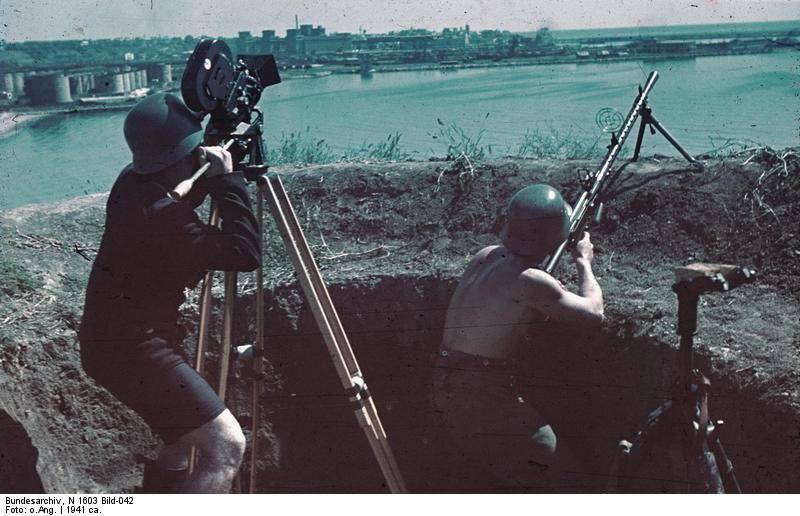
The power supply was made from a 25 cartridges mounted on the left side of cartridges or the soon-accepted Patronentrommel 13 two-drum store which had a capacity of 75 cartridges. This store is also called "saddle". It was mainly used for anti-aircraft fire. There were two options for devices for loading the magazine from a rifle holder. For carrying the regular box-shaped stores were laid in a special closure of eight pieces. Sector sight had a notch from 100 to 2000 meters with a pitch of 100.
Three main modifications of the machine gun were produced: the standard infantry "13" with a light barrel 718 millimeters long, "13k" with a light barrel shortened to 600 millimeters, "13kd" with a heavy barrel shortened to 600 millimeters (for firing in long bursts). "13k" were used as tank machine guns (on the light tank Pz.Kpw I and Pz.Kpw II), and aviation (limited). "13kd", equipped with a two-drum magazine, was used as an anti-aircraft weapon to destroy targets at altitudes up to 1 meters. For this, a ball front sight mounted on a folding frame and an annular anti-aircraft sight were used. The MG.13 machine gun through an adapter was installed on a steel anti-aircraft tripod, which was developed for the MG.08 / 15 machine gun, or on the "34" tripod adopted later. During the Spanish Civil War, the MG.13k machine gun was mounted on the Colt machine gun through an improvised adapter.
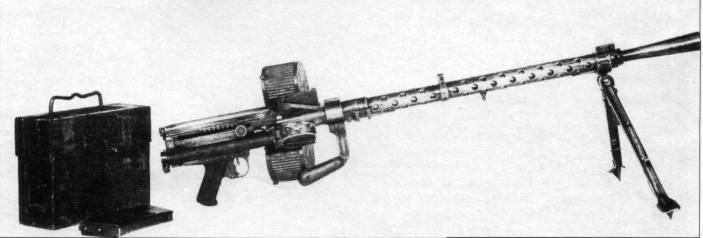
The main competitor of Rheinmetall in the development of light machine guns with air-cooled barrel and store supply was Mauser. It is also necessary to note the work of Heinrich Volmer in Biberach on a light machine gun - his VMG.27 machinegun, whose automation worked on the basis of recoil of the barrel and store supply, had 78 parts. However, Volmer did not have such an opportunity to "push through" his own developments, like those of the Mauser or Rheinmetall firms, and the work was stopped in 1930. All attention was focused on the development of a single machine gun.
A significant shortage of machine guns forced the Wehrmacht in the middle of the war to use the old MG.13, introduced into units along with the MG.34 and MG.42 machineguns. However, during the years of the Second World War, MG.13 and modifications of this machine gun were mainly used in training, rear, foreign formations and occupation units.
The order of unloading machine gun "Dreyze" MG.13:
Turn on the fuse by checking the box with the letter S (turning back). By clicking on the latch behind the store to separate it. Take back the bolt by the charging handle, release the bolt handle. Turning the flag on the letter F (forward) to turn off the fuse, pull the trigger.
The order of partial disassembly of the MG.13 "Draize" machine gun:
1. Unload a machine gun.
2. Open the cover of the box by pushing the cover latch forward.
3. Tilt the back plate down by pressing on its latch (behind the box on the left side), turn the limiter flag down (above the pistol grip on the left).
4. Remove the bolt from the receiver.
5. Raise the accelerator by turning it to the left.
6. Remove the barrel and receiver from the box.
7. Separated from the barrel receiver.
For assembly, actions are performed in the reverse order.
Specifications of the MG.13 light machine gun:
Chuck - 7,92-mm "Mauser" (7,92x57);
The mass of weapons - 10,89 kg (without cartridges);
The mass of the empty magazine with a capacity of 25 cartridges - 0,39 kg;
Bipod weight - 1,05 kg;
The full length of the weapon is 1466 mm;
Barrel length - 717 mm;
Grooves - 4 right;
Initial bullet speed - 823 m / s;
Target firing range - 2000 m;
Effective range - 1000 m;
The rate of fire - 500-550 shots per minute;
Food - box magazine capacity 25 cartridges / double drum capacity 75 cartridges;
Machine weight - 32,3 kg.
Information